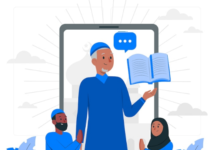The higher education industry is rather unlike various other markets. It has its very own procedures as well as a various collection of needs. Most industrial exclusive application vendors develop their applications focused on a broader domain spread across sectors. This, academics whine, develops an unique disconnect in between software program vendors and the end-users in academia.
To get over these shortcomings, the education sector started aiming to “open source” as an alternating model. Around a years back, establishments began debating complete expense of ownership in embracing an open source based area approach vis-à-vis proprietary applications, feasibility of open source based organization designs, sustainability and also protection issues.
The success of community developed open source software application is quite well developed. Linux and Apache are enough evidence of its success. A comparable pattern, though not that extensive in its reach, can be mapped to the development of neighborhood jobs in education like the Moodle and also Sakai.
With the training course of its developmental years, the open resource neighborhood based strategy in education has created a number of alternative models. A few of these designs and schools of idea have actually prospered as well as been executed successfully across a considerable range of the industry. Progress and also success in open resource projects like the Sakai, Moodle, Kuali, uPortal, Shibboleth, as well as many more are being carefully viewed by the sector.
Area Source Design.
One college of idea believes that open resource sharing is extra a thoughtful method than a practical option. The fostering of open resource in higher education seems to suggest otherwise. FLOSS (Free/Libre and Open Resource Software application) neighborhoods are thriving well in discovering atmospheres too.
The FLOSS version has been thoroughly made use of in campaigns like the MIT OpenCourseWare and Open Resource Biology. Job Gutenberg, the Wikipedia, The Open Thesaurus project are archetypes of exactly how open source has actually been successfully adapted to education efforts.
In a neighborhood source project, numerous institutions integrated to partner in the job. All partners add monetarily as well as in employing personnels for the initiative. In the early stages, the partnering establishments offer all layout and also advancement initiatives as well as only in succeeding phases is the job opened to the more comprehensive area. In this manner, the initial assistance is secured and the institutions have a substantial influence in deciding exactly how the application is modeled and made.
The first focus of community source projects gets on cooperation between organizations. The emphasis in the critical first stages is for that reason to form a typical financial overview as well as an appropriate management structure instead of creating a community around a shared code. Most area based open resource projects gradually migrate to open up resource in the later stages.
The Sakai project, as an example, began as a joint effort between four establishments (Michigan, Indiana, MIT and also Stanford). The preliminary agenda was to establish a framework of common objectives that would certainly generate proper software program based on an agreed list of objectives. The extent for involvement was later on enhanced by creating the Sakai Educational Allies Program (SEPP), where various other organizations can sign up with as well as join the neighborhood for a tiny charge.
The Current Landscape.
An education enterprise like any type of organization has its very own requirements varying from source planning to budgeting. Additionally, they have regular requirements like the demand to integrate with financial assistance programs of the government, multiple pay-roll cycles, as well as student information systems (SIS) that handle admissions, qualities, transcripts, pupil records as well as billing. All these require durable ERP systems. Up until lately, institution of higher learnings primarily depend on either custom-developed systems that are more than 15 years of ages, or have actually transitioned to business products from vendors like Oracle, SAP, PeopleSoft or vendors like SunGard that are geared towards the college market.
Kuali Financials was birthed due to the lack of open resource remedies Venture applications in the higher education sector are comprised of a mix of some exclusive application vendors as well as some crucial open resource community efforts. PeopleSoft, Oracle, SunGard as well as Datatel are some essential vendors that provide tightly integrated ERP packages for the education field.
Recent loan consolidation in the industry, like the procurement of PeopleSoft by Oracle and of WebCT, Angel, and so on by Blackboard, has triggered significant worry in the education society. The problem comes from the anxiety that the pattern of loan consolidation would result in the syndicate of a few vital suppliers. The strategies of these suppliers to provide snugly incorporated systems heightens the concern that this will offer an unreasonable leverage to these suppliers as it would expand the area’s dependancy on them.
One area of concern regarding exclusive applications is a seeming detach in between the industry and software application programmers. Organizations likewise have strong bookings regarding the currently available administrative software program as well as program administration systems. The sensation is that applications given by vendors such as SAP as well as PeopleSoft are adjusted from other industries and also does not work well for academic enterprises. Furthermore, the exclusive nature of the applications suggests that the source code is not available and personalization efforts involve considerable prices.
In the context of such a vast breadth of requirements, open resource can prove to be a sensible choice. Actually, these constraints provided the inspiration for open source campaigns in higher education. Some of the success has assisted provide a solid foundation to building an alternative assistance version for the education industry.
In the Sakai task, the getting involved institutions determined to incorporate as well as integrate their educational software into a pre-integrated collection of open source devices called Collaborative Learning Environment (CLE). Sakai has active applications running at several institutes including the University of Michigan and Indiana University.





I found the discussion insightful and practical, offering real-world tips that managers and teams can apply daily to enhance collaboration, communication, and adaptability in any workplace environment across various industries Soft Skills Training in Pune.